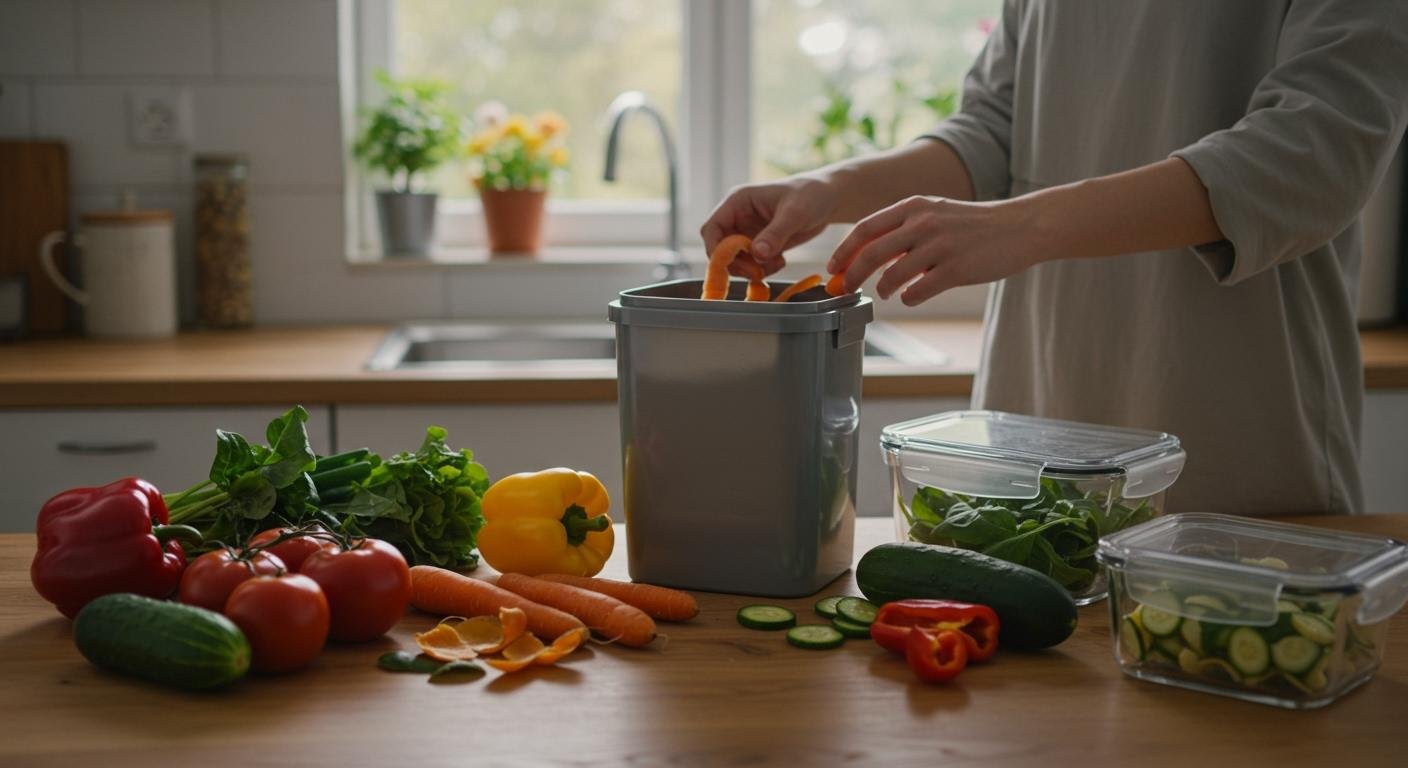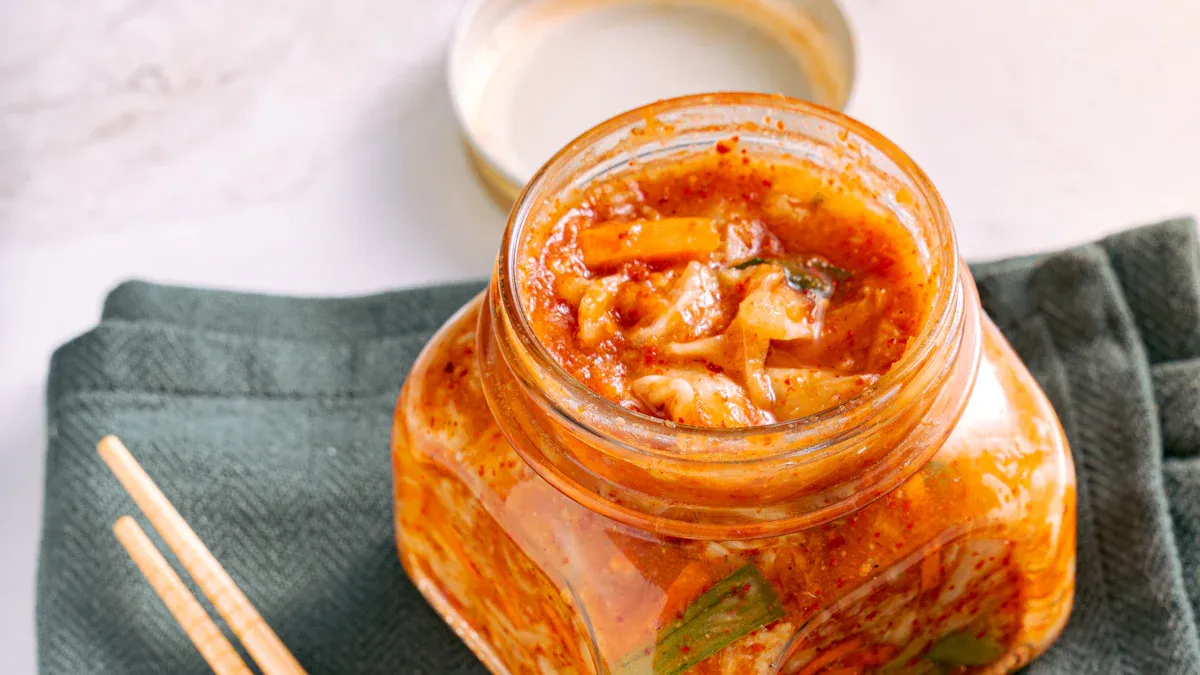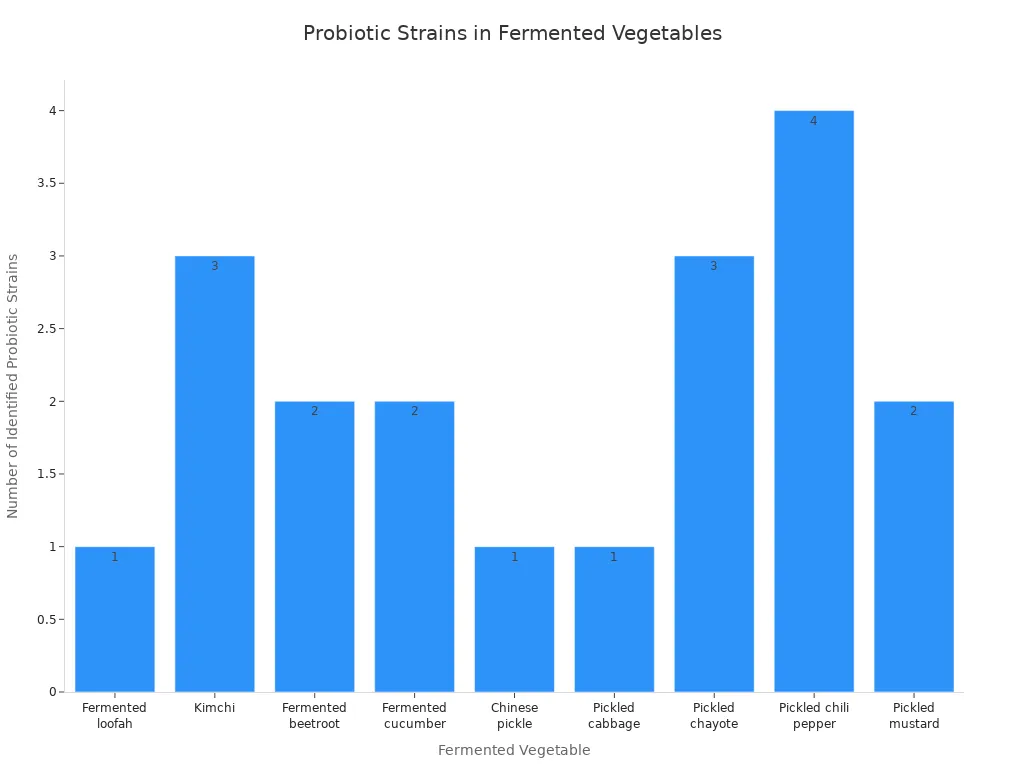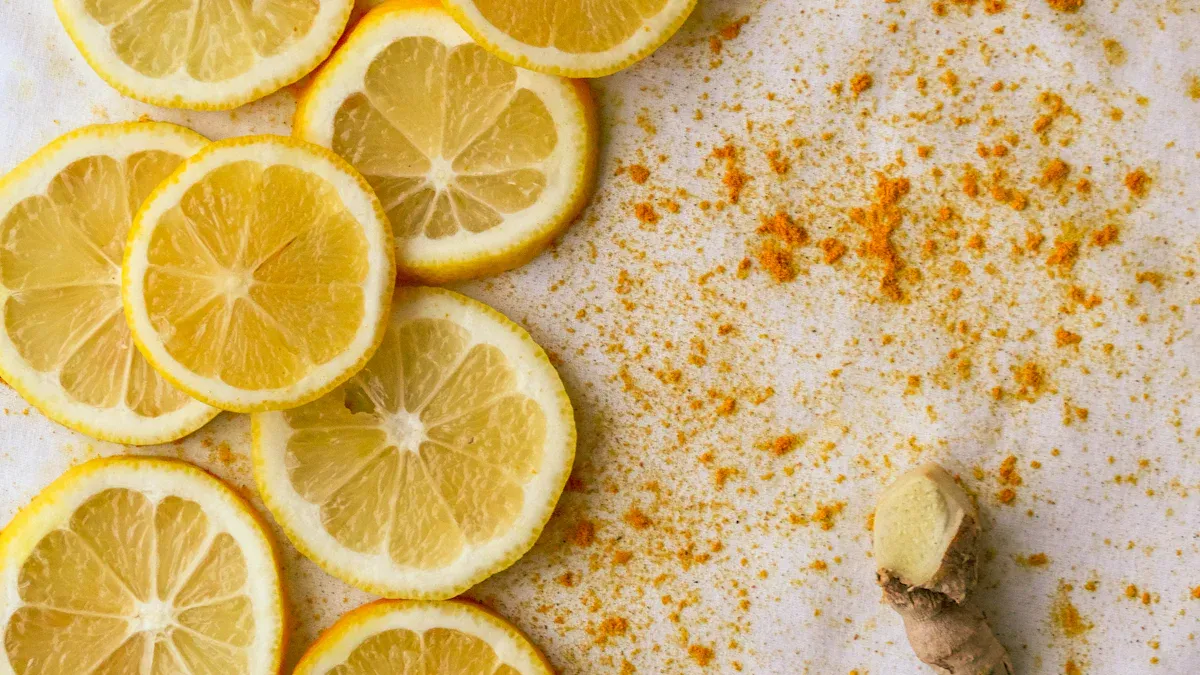Mastering Food Waste Reduction at Home
Table of Contents

You want to save money and get more creative in your kitchen. An average American family loses around $1,866 each year on food that is never eaten. You can start your food waste reduction journey with fermentation. This simple process is a primary tool for low waste cooking, turning scraps into delicious new ingredients.
Did You Know? 🧐 In 2021, households in the EU wasted over 131 kg of food per person. This scrappy problem has a huge impact. If global food waste were a country, it would be the third-largest greenhouse gas emitter after the U.S. and China.
Mastering fermentation, along with other easy methods like making infusions and powders, empowers you to transform your kitchen.
THE POWER OF FERMENTATION FOR FOOD WASTE REDUCTION

Fermentation is a natural process. Microorganisms transform your food, extending its shelf life and boosting its nutritional value. You can use this ancient technique for effective food waste reduction. It turns surplus ingredients into bold, new flavors. This method is a cornerstone of scrappy, creative cooking.
FROM TRASH TO TREASURE
You can turn overlooked food scraps into culinary gold. This simple shift in mindset helps with reducing food waste at home. Many innovative companies already transform rejected produce into gourmet products.
- Toast Ale brews beer using surplus bread.
- Rubies in the Rubble makes condiments from rejected food.
- Pure Plus creates a sugar substitute from imperfect fruits.
- Upcycled Grain Project focuses on upcycling grains into new foods.
You can adopt this same spirit in your kitchen. Think about broccoli stems, for example. They are often discarded but are full of flavor and texture.
“In my opinion, they’re even better than the florets – I’m not sure why they ever earned the name ‘scrap’! To this day, I always add broccoli stalks to stir-fries, pastas, or snack on them raw.” -Melissa, Content & Communications Strategist
BOOSTING FLAVOR AND NUTRITION
The process of fermentation does more than preserve food. It creates incredible flavors and improves nutrition. The microorganisms involved in fermentation produce complex sour and umami notes. This adds depth to everything from kimchi to sauerkraut.
This transformation also unlocks nutrients. Fermentation improves the digestibility of plant-based foods. It breaks down compounds like phytic acid. This process increases your body’s ability to absorb minerals like iron, calcium, and zinc. The bacteria also produce beneficial probiotics. Different vegetables host unique strains of these healthy microbes.

This powerful fermentation makes your food safer by limiting harmful pathogens. Your journey into food waste reduction can lead to delicious and healthier meals.
CORE FERMENTATION TECHNIQUES
You can easily start your journey into fermentation with a few core methods. These techniques are simple, require minimal equipment, and open up a world of flavor. You will turn common kitchen leftovers into valuable ingredients.
LACTO-FERMENTATION BASICS
Lacto-fermentation is a form of pickling that uses salt, water, and vegetables. Beneficial bacteria, called Lactobacillus, convert sugars in the vegetables into lactic acid. This acid acts as a natural preservative. The basic formula is simple: vegetable scraps + salt + water.
For a stable and safe fermentation, you should aim for a salt concentration of about 2.5% of the total weight of your vegetables and water. You can achieve this by weighing your ingredients. First, weigh your vegetables and the water needed to cover them. Then, multiply that total weight in grams by 0.025 to find the exact amount of salt you need. Some people prefer a saltier taste, with brine concentrations up to 3.5% working well for crunchy cucumbers.
Ready to try it? You can make a delicious carrot and cabbage kraut with this scrappy recipe.
Simple Carrot & Cabbage Kraut
- PREPARE: Finely shred three parts cabbage and one part carrot. You can also add grated ginger for extra flavor.
- SALT: Place the vegetables in a large bowl. Add about 1 tablespoon of salt for every 1.75 pounds (800g) of vegetables.
- MASSAGE: Massage the salt into the vegetables for about 10 minutes. This action breaks down the cell walls and draws out water, creating a natural brine. You will see a puddle of liquid form at the bottom of the bowl.
- PACK: Tightly pack the mixture into a clean glass jar. Press down firmly to remove air pockets. The brine should rise and cover the vegetables completely. Leave at least one inch of space at the top of the jar.
- SUBMERGE: Use a clean outer cabbage leaf or a fermentation weight to keep all the vegetables submerged under the brine. This is the most critical step for safety.
- FERMENT: Loosely cover the jar and leave it at room temperature for at least one week. “Burp” the jar daily by briefly opening the lid to release built-up gas. After a week, taste it. Once it’s tangy enough for your liking, move it to the refrigerator.
MAKING FLAVORFUL INFUSIONS
Infusing is another fantastic way to use food scraps. You simply steep flavorful scraps in a liquid like vinegar, alcohol, or oil. This process extracts the essence of the scraps, creating custom-flavored liquids.
Your choice of liquid acts as a blank canvas. Neutral spirits like vodka are excellent because their mild taste allows the flavors of herbs and fruits to shine. Vinegars like apple cider or red wine vinegar are perfect for making tangy fruit shrubs.
Flavorful Infusion Ideas 🍓
- Strawberry Balsamic Shrub: Combine overripe strawberries with three parts red wine vinegar and one part balsamic vinegar.
- Lemon Ginger Vinegar: Steep lemon peels and ginger scraps in white wine vinegar.
- Herb Stem Vodka: Fill a jar with fresh herb stems (like mint or basil) and cover them with vodka. A good starting ratio is one part herb to five parts alcohol.
The process is straightforward. Combine your scraps and liquid in a clean jar, seal it, and let it steep in a cool, dark place. Vinegars generally need one to three weeks to develop a robust flavor. After steeping, you just strain out the solids and enjoy your homemade creation.
ESSENTIAL SAFETY TIPS
Food safety is paramount in any kitchen project. While fermentation is a very safe process, following a few key rules ensures success and gives you peace of mind.
1. Clean Your Equipment For vegetable ferments, you do not need to sterilize your jars like you would for canning. However, you must clean them thoroughly.
- Wash jars and lids with hot, soapy water.
- Scrub away any visible dirt.
- Rinse everything several times with clean water.
- Let the equipment air dry completely.
2. Know Your Growth: Mold vs. Kahm Yeast Sometimes, a film can form on top of your ferment. It is important to know what is safe and what is not.
| Feature | Kahm Yeast (Harmless) | Mold (Discard) |
|---|---|---|
| Appearance | A thin, wrinkly, white film that can cover the surface. | Fuzzy, hairy, or powdery patches. |
| Color | White or cream-colored. | Can be green, blue, black, or white. |
| Smell | Smells like normal, sour fermentation. | Has a musty, rotten, or “off” odor. |
3. Keep It Submerged The biggest risk in fermentation is exposure to air, which can lead to mold. The salty, acidic brine creates an anaerobic (oxygen-free) environment where harmful bacteria like Clostridium botulinum cannot survive. Always ensure your vegetables stay below the surface of the brine. If the brine level drops, you can top it off with a 2.5% salt water solution.
4. Trust Your Senses Your nose is your best guide. A healthy ferment should smell pleasantly sour and tangy. If you ever encounter these signs, discard the batch:
- A putrid, rotten, or vomit-like smell.
- A slimy or ropey texture in the brine.
- Visible, fuzzy mold of any color.
BEYOND FERMENTING: REDUCING FOOD WASTE WITH SCRAP POWDERS

You can take your journey in reducing food waste even further by turning leftovers into flavorful powders. This method transforms vegetable peels, stems, and skins into potent seasonings that add a punch to any dish.
DEHYDRATING LEFTOVER SCRAPS
Dehydration is the first step to creating your own powders. You can use a standard oven for this process. First, make sure your oven can hold a low temperature of 140°F. You can check this with an oven thermometer.
- Place your clean, dry food scraps in a single layer on a cooling rack set on a cookie sheet.
- Prop the oven door open two to six inches to allow moisture to escape.
- Drying times vary. Celery leaves might take 20 hours, while onion skins could take 6 to 18 hours.
You will know your vegetables are ready when they are completely brittle. They should feel tough and shatter when you hit them. This dryness is key for long-term storage.
GRINDING SCRAPS INTO SEASONINGS
Once your scraps are fully dehydrated, you can grind them into a fine powder. You can use a coffee grinder, spice grinder, or a high-powered blender. To prevent your finished powder from clumping, you can take an extra step.
Tip to Prevent Clumping 🧂 After grinding, spread the powder on parchment paper. Bake it in the oven at 200°F for about 15 minutes. This removes any last bit of moisture. Let it cool completely before storing it in a sealed container in a cool, dark place.
USING YOUR HOMEMADE POWDERS
Your homemade powders are a secret weapon in the kitchen. A spoonful of mushroom stem powder adds a deep, savory umami flavor to soups, stews, and gravies. This is a great way to use food scraps you might have thrown away. Get creative and make your own scrappy seasoning blends.
Creative Seasoning Ideas:
- Vegetable Bouillon: Combine powders from carrot peels, onion skins, and celery ends.
- Tomato Skin Salt: Mix dehydrated tomato skin powder with salt for a tangy seasoning.
- Mushroom Salt: Blend mushroom stem powder with salt and dried thyme.
You now see that food waste reduction is a creative culinary journey, not a chore. Techniques like fermentation and dehydration empower you to turn leftovers into amazing ingredients. This is scrappy, smart cooking. Your efforts in cooking sustainably join a larger movement, as many communities offer resources for food waste reduction.
Start Your Adventure! 🚀 Begin your journey today. You will save money and help the planet, one scrap at a time.
FAQ
What equipment do I need to start fermenting?
You need very little to start. Your basic tools are glass jars, non-iodized salt, and clean water. You can also use a fermentation weight to keep vegetables submerged. Most people already have these items at home.
How do I know if my ferment has gone bad?
You should trust your senses. A healthy ferment smells pleasantly sour. Discard your batch if you see fuzzy mold of any color or smell something rotten.
Safety First: When in doubt, throw it out. It is always better to be safe.
Which scraps are best for making powders?
You can use many dry or easily dried scraps. Onion and garlic skins, carrot peels, celery ends, and mushroom stems make excellent powders. Avoid very oily or wet scraps that do not dehydrate well.
How long do homemade ferments last? 🕰️
Your fermented vegetables can last for several months in the refrigerator. The cold temperature slows the fermentation process. Their flavor will continue to develop and get tangier over time.

Poseidon
Master of Nutritional Epidemiology, University of Copenhagen, Herbal Functional Nutrition Researcher
Focus: The scientific application of natural active ingredients such as Tongo Ali, Horny Goat Weed, and Maca to sexual health and metabolic regulation.
Core Focus:
Men: Use a combination of Tongo Ali (an energizing factor) + Maca (an energy reserve) to improve low energy and fluctuating libido.
Women: Use a combination of Horny Goat Weed (a gentle regulator) + Maca (a nutritional synergist) to alleviate low libido and hormonal imbalances.
Stressed/Middle-Aged Adults: This triple-ingredient synergy supports metabolism, physical strength, and intimacy.
Product Concept:
Based on traditional applications and modern research (e.g., Tongo Ali promotes testosterone-enhancing enzyme activity, and icariin provides gentle regulation), we preserve core active ingredients and eschew conceptual packaging—using natural ingredients to address specific needs.
Simply put: I'm a nutritionist who understands "herbal actives." I use scientifically proven ingredients like Tongo Ali, Epimedium, and Maca to help you make "sexual health" and "nutritional support" a daily routine.
